Ribera de Bilbao
Walking in the Shadows of Present and Past.
As a first point of contact to give you a good impression of the city, we look a little around Bilbao’s riverside. We are on la Ribera de Bilbao, on its western bank between the Guggenheim and Maritime Museums. Here, we are standing in the shadows of San Mamés stadium and the Palacio Euskalduna centre.
We will have a look at tourist access from the airport, the Termibus centre and by car from the southern direction of Madrid and Burgos. We finish off with advice for getting around Bilbao and the Basque County on the various transport systems.
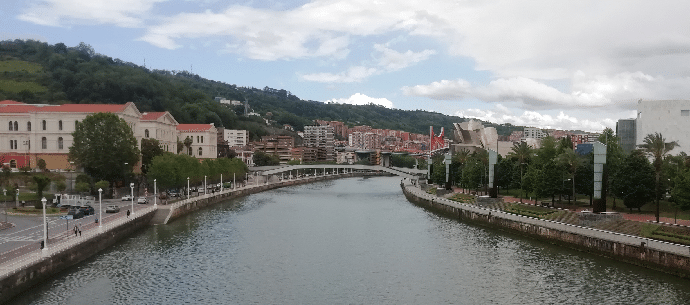
Deustu University on the left, UPV library on the right
First Impressions.
The first thing you might notice about Bilbao, if you are coming in from the east over La Salve bridge from the nearby airport, is the amount of repurposed post-industrial architecture. Much of this sits close to the world-famous Guggenheim art museum on the riverside. La Ribera de Bilbao, the riverside of Bilbao’s estuary, is a refurbished and repurposed area with a series of walkways bustling with life. It includes children’s playgrounds, exercise areas, bars, restaurants and other museums, not only the aforementioned Guggenheim.
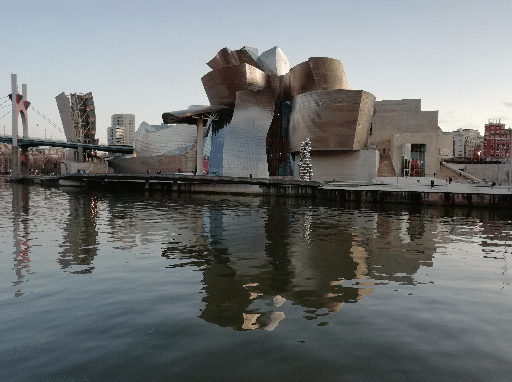
Guggenheim Museum, on the ribera de Bilbao
Post-industrial charm.
Part of the city’s charm is that the old industrial architecture. The riverside streetlights used to be cranes from the shipyard which existed on the current site of the Guggenheim. They sit comfortably beside modern additions like the art museum and the nearby maritime museum, which is under Euskalduna Bridge. This museum and bridge are in the shadow of the old Euskalduna building. Euskalduna formed part of the shipyard and now functions as a conference centre and concert and exhibition hall. Previously, the Astilleros Euskalduna shipbuilding company's installations had dominated the area. Many of these buildings remain, fulfilling more artistic and cultural purposes.
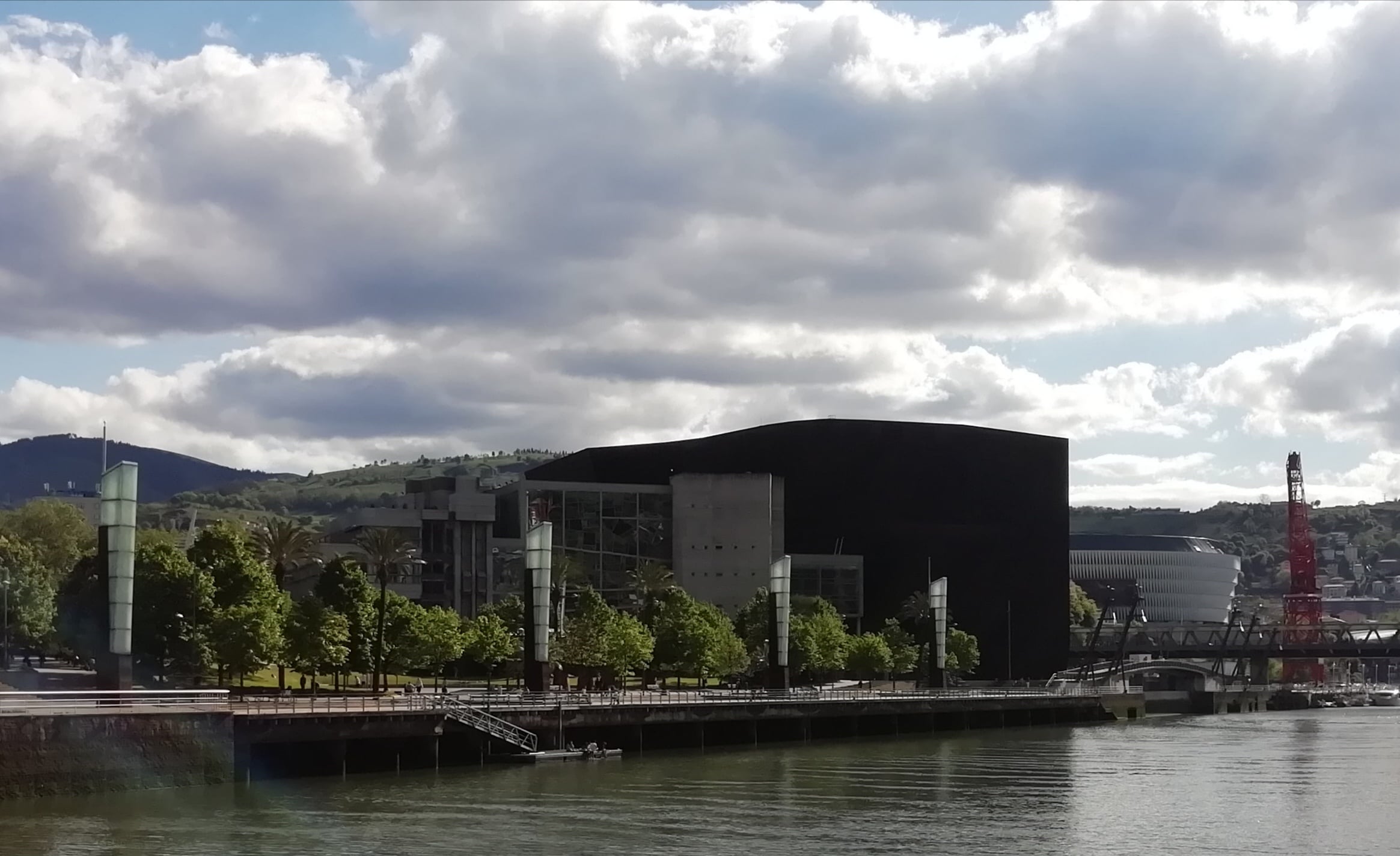
Palacio Euskalduna on Bilbao riverside
Monoliths on the ribera de Bilbao, both old and new.
You might notice that, wherever you are on the ribera de Bilbao, you are in the shade of behemothic structures. Imposing structures which can be seen from other more distant parts of the city cast their gargantuan shadows. This gives the place a slightly monolithic feeling. San Mamés, Athletic Bilbao Football Club’s stadium overlooks the maritime museum and Palacio Euskalduna. You can read more about the club and its history here.
Meanwhile, on down towards the Guggenheim, the University of Deusto looks across from the other side of the river. You can see roads and motorways on the hillsides on each side of this city. They take drivers through Bilbao's river valley, and have their concrete reinforcements painted with culturally-diverse murals along the roads' lengths. These blend in nicely with the green hillsides. Adding to the charm of the city, the modern sits well beside the architecture of a previous era. The newer and more functional modern constructions look less grim with a lick of paint or a mural promoting diversity.
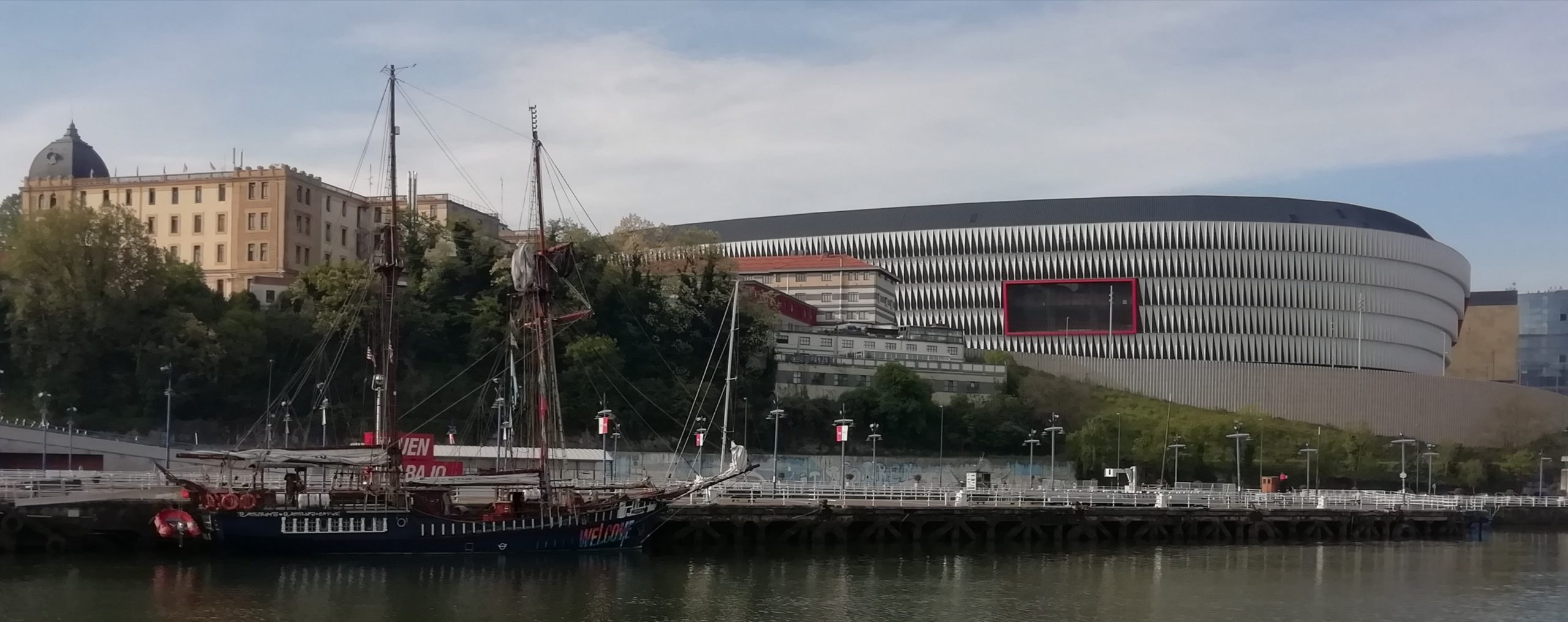
Long-mast ship on Bilbao's riverside
Getting there and getting about.
Arriving in the city at the brand-new Bilbao Intermodal station close to the stadium, either on the A3247 Bizkaibus from the airport in the east or from the motorway on the westside that brings you by car or bus into the city from the south, you can walk a short distance to the ribera de Bilbao. You can also get there on a short tram ride from the San Mamés tram stop at the side of Bilbao Intermodal, passing the stadium, which hides behind some buildings. It is three stops to the Euskalduna centre and four to the Guggenheim. You can see the tram map at this link.
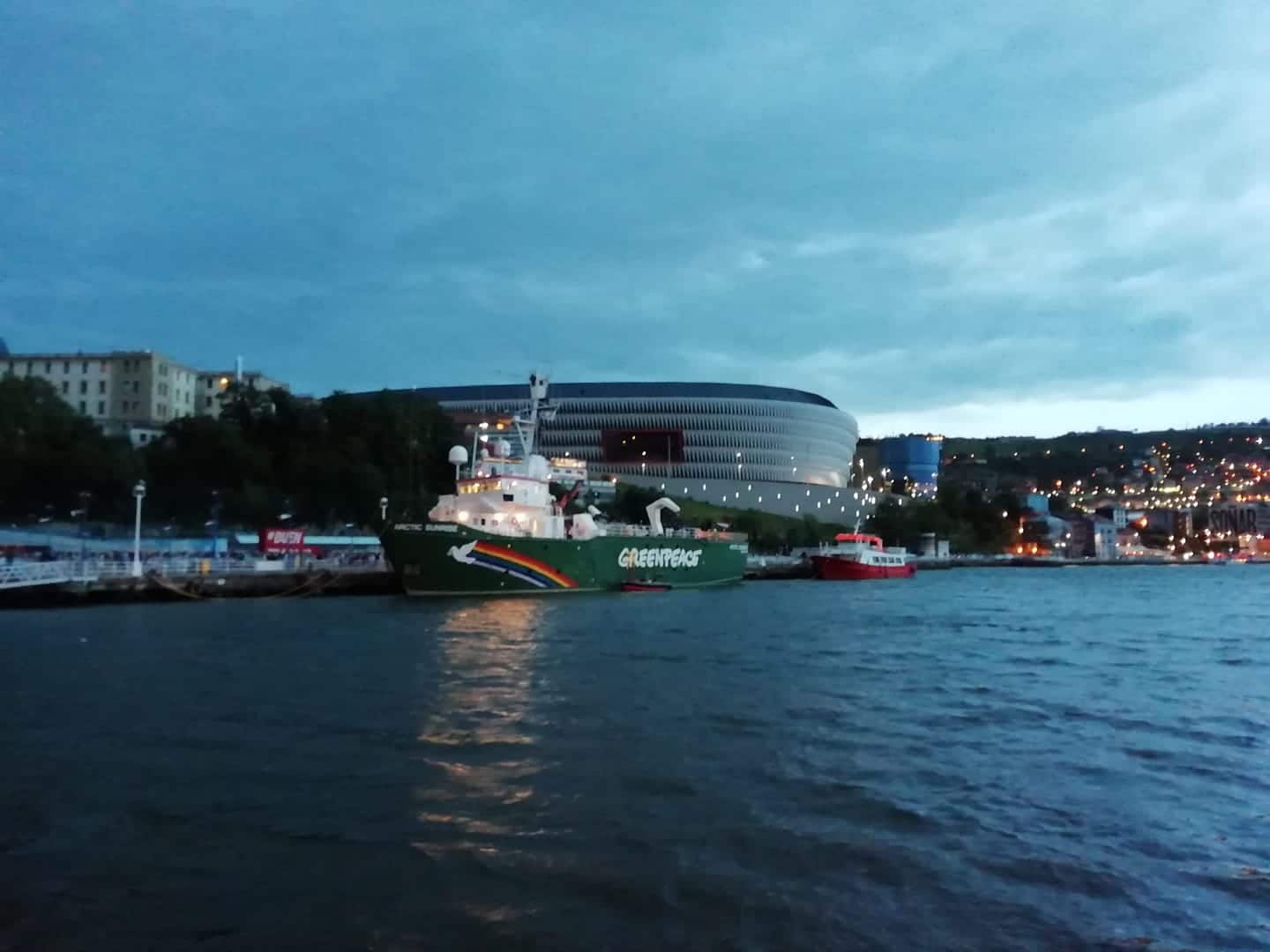
Greenpeace on Bilbao Estuary back in 2019
In our linked article, we take a walk around the historical part of Bilbao. This is the Casco Viejo in Spanish, or the Seven Streets, which is a historical reference to old Bilbao. We will have a look at the area’s Catedral de Santiago, its bars, restaurants and shops of which there are many. The old part is a great option for getting yourself lost on a quaint trail of winding side streets.
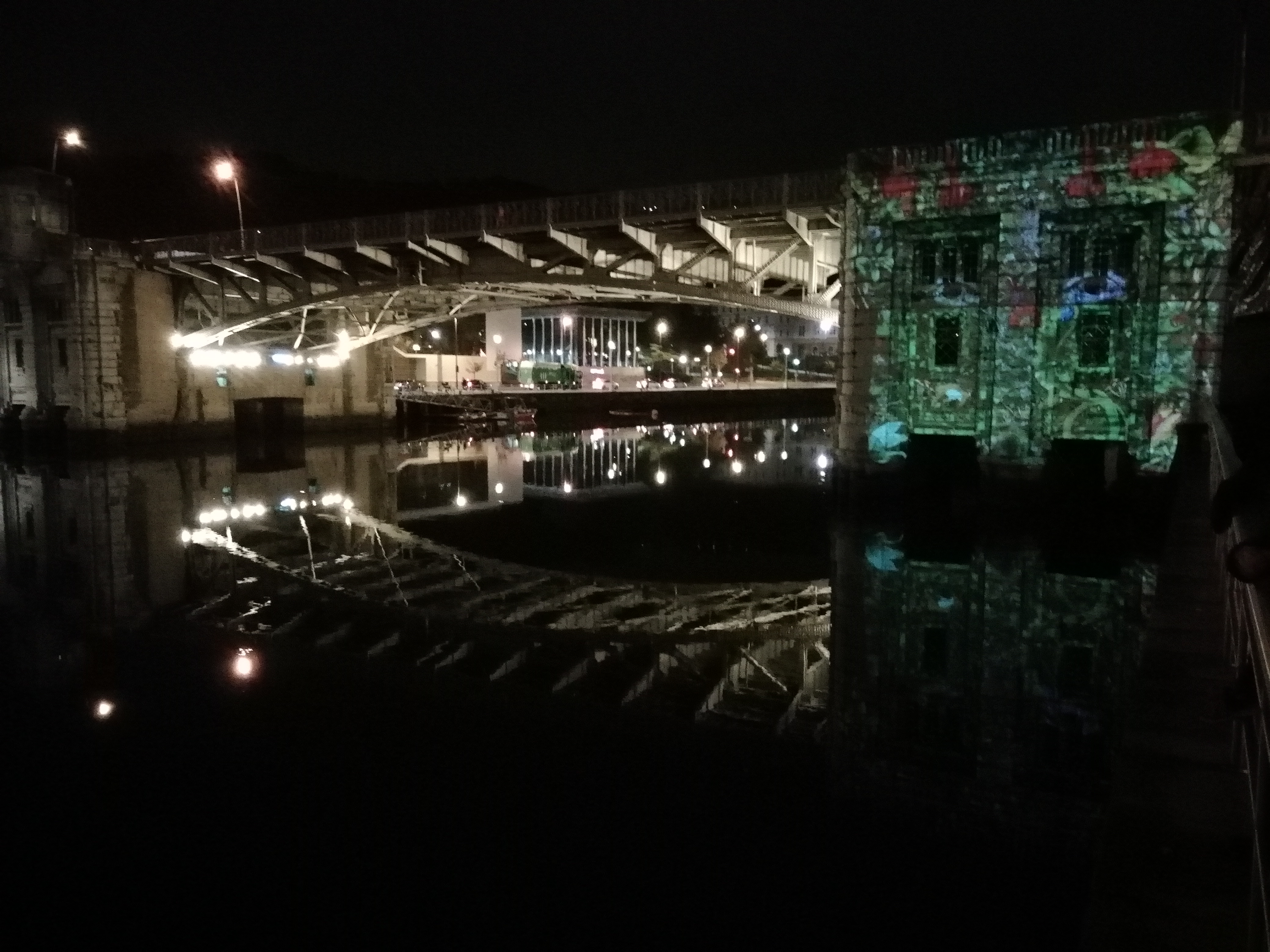
A night-time light show against Deusto Bridge
tailtiu Travel and transport Tips:
Getting around
the Basque Country
If you are arriving from the airport:
A taxi from the airport into town will cost you at least €25, so you should get the A3247 Bizkaibus from the airport, which means coming out of arrivals after collecting your luggage, turning right and walking to the far end of the airport building. You can make a small investment of €4 to buy a travel card called the Barik (click here for information) and charge it up with a few Euros to get around initially. Then you recharge the card in the metro stations on the Barik machines or at various kiosks beside bus stops throughout Bilbao. You will be pleasantly surprised at the cheap fares for getting around with many journeys costing between 90 cents and €2.00.
More information regarding the airport can be found on its website at the following link.
You will know that you have entered Bilbao as you cross the river over La Salve Bridge. The bridge literally passes over the top of the Guggenheim, or at least part of it. At the end of that street, you can get off at the central Plaza Moyúa, leaving you in the centre. Alternatively, you can stay on until the end at the Bilbao Termibus. Taxis are available at the side of the Termibus and the door of Metro San Mamés is beside the station.
Special advice if you are using
the Barik travel card:
If you are on the red city buses called Bilbobus, you only have to swipe the card once on entry for each passenger to embark.
However, this is a little different on the green and white provincial coaches, which are Bizkaibus. You must swipe twice on the A3247 from the airport for instance. You do this once on entry at the front of the bus, beside the driver. Then you do it again on exit, through the door halfway down the coach where there is another card sensor. This will make sure you are charged for the length of your journey, not the price of the entire bus route's distance.
If you are using the tram, the Tranvía Bilbao, you swipe the Barik card once before getting on. There is more information about the tram at this link, which is the Euskotren page. Euskotren is a rail service comprising of various systems which criss-cross the Basque Country. You will find that for very little, you can get as far as the French Basque border town of Hendaya. Travellers can do this all on Euskotren with the Barik travel card.
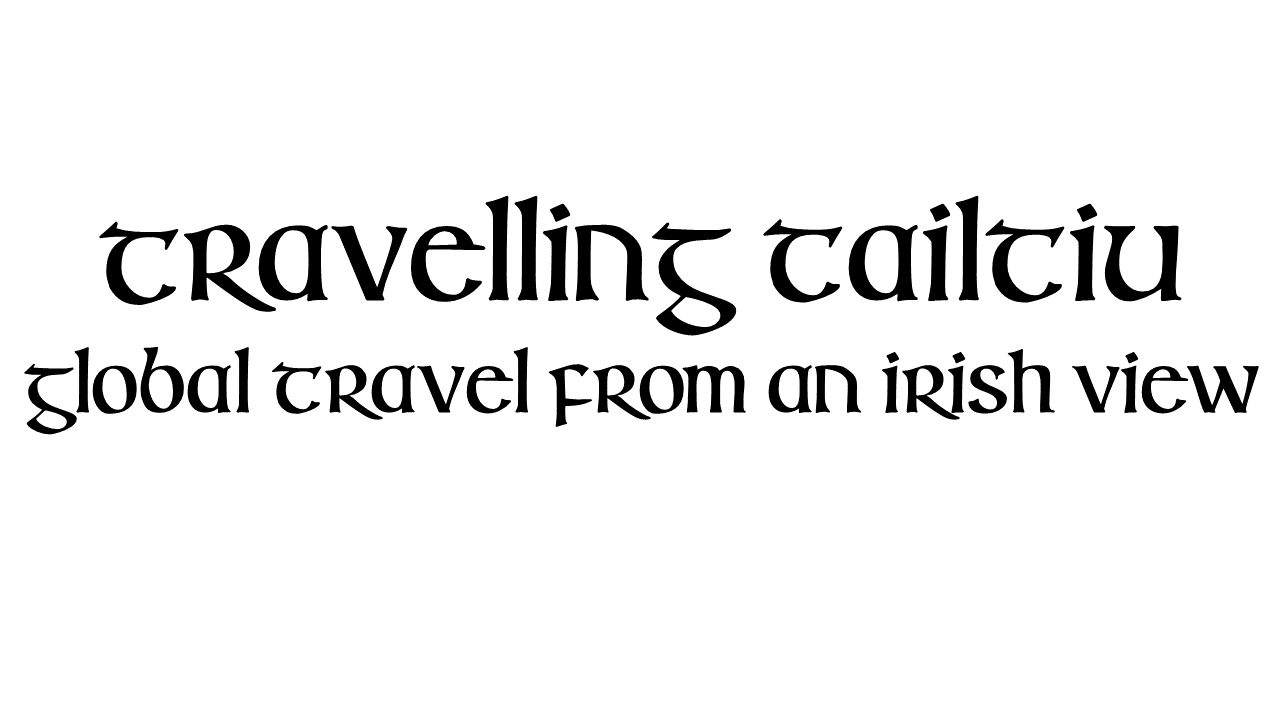
Hi, this is a comment.
To get started with moderating, editing, and deleting comments, please visit the Comments screen in the dashboard.
Commenter avatars come from Gravatar.